|
| February 2017 |
|
|
February Gathering - 2/8/2017
Our February Gathering will feature "A Prelude to the Games" with three discussions explaining activities you will experience at the Phoenix Scottish Games:
- 7:30 - 7:50 - Highland Dance fetauring the Great Highland Pipes
- 7:50 - 8:10 - Scottish Heavy Athletics
- 8:10 - 8:30 - Clans: Tartans, Names and Symbols
Due to the Games Committee's planning meeting the same night, the start of
our February Gathering will be delayed until 7:30 pm.
Join us at 7:30 PM at the Irish Cultural Center, 1106 N. Central, Phoenix.
There's a 50/50 Raffle drawing at 8:30 pm, and light refreshments
will be available. Members and children are free. $5 donation requested for
non-members. (Check out becoming a member below!)
What to do before the Gathering starts at 7:30 pm?
- there's a new restaurant in the *Found:Re Hotel* immediately adjacent
to the ICC. It's called 'Match Cuisine & Cocktails'
matchphx.com
Their happy hour runs from 4:20 - 6:20 pm and includes 2 hours of free parking
- or, check out *Fez On Central* at the corner of Central and Portland,
about 1/2 block south of the ICC. fezoncentral.com They also
have a Happy Hour which runs from 3:30 - 6:30 pm. There's parking along
Portland Street.
For other close-by parking locations, see this map
|
Letter from the Editor, Don Finch
Dear fellow Caledonians:
 There’s excitement in the air, and soon it will be on the grounds of Steele-Indian School Park in central Phoenix. For the 53rd year in succession, The Caledonian Society of AZ will be hosting the Phoenix Scottish Games. There’s excitement in the air, and soon it will be on the grounds of Steele-Indian School Park in central Phoenix. For the 53rd year in succession, The Caledonian Society of AZ will be hosting the Phoenix Scottish Games.
We’re using this issue of The Desert Highlander Newsletter to tell you about some new and returning activities.
Sponsors Following the 2016 Games, long-time sponsor Glenmorangie Single Malt Scotch Whisky advised they were changing their marketing focus away from highland games. We’re delighted that Four Peaks Brewing Company agrees that our event is a perfect place to promote their famous Kilt Lifter® Scottish-Style Ale, leading us to welcome them as our event sponsor.
Dance What’s the difference between a Highland Dance competition and a Championship? Quite a bit, actually!
- A Championship is a more prestigious form of a competition.
- Whereas a competition uses only one judge per group, a Championship uses three (3) judges, all judging independently.
- The scores are averaged to determine a winner in each group.
- The steps for the dances are set each year by the SOBHD* Technical Committee so competitors of the same age dance the same steps.
- *Scottish Official Board of Highland Dancing of Highland Dancing.
- The Championship is on Saturday, March 4th and the Pre-Premier Competition and Workshop will be held on Sunday March 5th.
Games History Our Society’s Historian Jim Grant has written a terrific article reminiscing about how our local event came into being. And we’ve included an article from The Scotsman on the origins of the Games in Scotland about a thousand years ago, Even Jim Grant wasn’t around then!
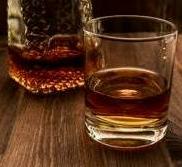 Pleasing your Olfactory Skills Pleasing your Olfactory Skills
Chef Eric McBride will be doing live Celtic Cooking demonstrations several times each day, making traditional Celtic dishes with a modern flair in front of a seated audience. Next door in the ‘Scotland the Brave Single Malt Tasting Tent’, scotch experts Richard and Jude MacKenzie will be sampling Speyburn, Old Pulteney, anCnoc Cutter drams, plus Caurunn a new small batch distilled gin.
.jpg) Finally Finally
Come to our monthly Gathering on February 9th, 7:30 pm at the Irish Cultural Center, 1106 N. Central Avenue in Phoenix for ‘A Prelude to the Games’ to learn more about Highland Dancing with the Great Highland Pipes, Scottish Heavy Athletics, and the Clans: Tartans, Names & Symbols.
And there’s still time to take advantage of our Advance Ticket Deal to save money on Games tisckets, with no dditional fees.
Don Finch, Editor
|
|
A History of Highland Games in Phoenix
by James G. Grant, CSA Chief Historian
At first there was darkness upon the earth and then God created pipe bands and highland games, and nothing has been the same since!
I joined the Phoenix Scottish Pipe Band on Sept 1,1964. This was after 3 years in the Arizona Highlanders Pipe Band. My family and I had been going to the Highland Society games in Santa Monica, CA since 1962. The idea to do a local games/gathering arose along with the urge to go to California and compete against other pipe bands! They have medicines for that now, but not then!
We who had this affliction were encouraged by an old piper by the name of Jock Sneddon. Jock used to visit here in the winter from Nevada to get away from the cold. He took on the training of our pipers and also encouraged competition as a way to improve the quality of the band. Sound advice, times have not changed in that manner.
We approached the Arizona Scottish Society in Jan 1965 to help us start a games/family picnic/pipe band display. They were not interested with exception of the Tommy and Barbara Johnston family. One of the members did volunteer to coordinate with the city officials who were running Encanto Park.
.jpg)
Meantime, I talked several of our band members to go the Santa Monica Games to see what that was all about. We did, and went to competition 1 year later! We won!
But back to the fledgling games. The first Games/Picnic was held in June of 1965! Yes, dear hearts, 1965. On the original committee were the Johnston’s, Len Wood, Joe Leonard, Bob Matlack, James Grant, and Jock Sneddon. Our first do was strictly done with Phoenix Scottish Pipe Band folk and family. All the band wives and mommies provided the food and the band provided the wind! We had one Highland dancer and that was Ellen Bentley. Her Dad was one of our pipers.
The actual area that we gathered in is about 70-80 feet from the tree that was dedicated to Joe Leonard’s memory. Anyone interested in seeing our hallowed ground, I would be glad to take on a Saturday jaunt to the park. Just ask.
FYI---this all happens later, but here goes - first band: Phoenix Scottish; second band ever to come: the Cameron Highlanders from San Diego. First band competition between bands in Arizona: Cameron Highlanders and Phoenix Scottish. First piping/drumming/ drum major/ individual piping or drumming: Calvin(Cal) Biggar. Enough of the early days. Will send more next time!
|
|
Research Your Scottish Ancestry
Cemeteries and Cemetery Rcords
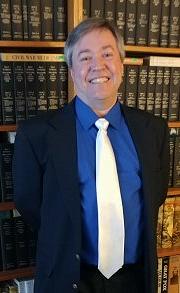 by Robert M. Wilbanks IV, B.A. by Robert M. Wilbanks IV, B.A.
Chief Genealogist & Historian, C.S.A.
genealogy@arizonascots.com
As morbid as it may sound, searching cemeteries can be one of the most fascinating, and even exciting, aspects of family history research. The awe and inspiration that you feel when you visit the grave and see and feel the tombstone of an ancestor is beyond description.
Cemeteries are not simply only where your ancestors were laid to rest. They are also where you will find monuments to them as ordinary people. As well as providing you with vitals and other details about your ancestors, these individual memorials also give you an understanding of who your ancestors were, and how family, friends and neighbors felt about them.
Cemeteries provide more than just basic vital statistics. The information found on tombstones is rich and unpredictable. If your ancestors were themselves the immigrants to America, tombstones may be the only record of the original spelling of their surname. Additionally, clues for maiden names, minor children, military service, occupation, religious and fraternal affiliations, and places of origin are other bonuses found in cemeteries. The tombstones of the Scottish in America or Canada could potentially identify the county or town of birth in Scotland. They are also particularly noted for identifying maiden names of women.
Cemeteries can be categorized into five different types: Churchyard (on-site church cemetery); Church owned (off-site church cemetery); Government or Civil (national, state, city, military); Private or Commercial (organization or business); and the Family Cemetery (on the old family homestead). Related to cemeteries are the records that are kept. In addition to the information provided on the gravestone itself, there are also the burial records kept by the cemetery caretakers, and various records kept by morticians and funeral homes.
Cemetery records and tombstones have long been an integral part of genealogy. As far back as the ‘Great Depression’ entire cemeteries have been transcribed and published. For researchers who cannot visit the cemeteries, this provides a great service. These book or manuscript publications can be found in the various special historical collections, genealogy libraries, archives and more. Meanwhile, the internet has become a new significant source for providing cemetery transcriptions with such websites as Find-A-Grave and BillionGraves and more; covering both the United States and many international locales.
However, there is always the possibility these transcriptions can contain errors, and even be misleading. For example, only in visiting the cemeteries can the researcher observe an ancestor’s placement in respect to other individuals in the cemetery. In this way you may discover family members with different last names buried nearby. Also, various symbols and markings identifying military service, fraternal associations, and other significant factors that may not be included in transcriptions.
As well as the tombstones, cemeteries can provide additional information through written record sources such as Church Burial Registers, Sextons’ Records, Cemetery Deeds and Plats, Burial Permits, Funeral Directors’ Records, and Grave Opening Orders. Like tombstones, these records will vary in content. While some of these written records may be on microfilm and available through libraries or archives, or maybe in online resources, most records are still only available by going to, or contacting, the cemetery’s records holding facility.
The care and condition of cemeteries will, naturally, be an important factor in the amount of information that you may find. Newer cemeteries and tombstones will be in better condition, but not necessarily provide more information. This is due to the cost of tombstones and carving them, and to cemetery restrictions limiting the style, size and shapes of tombstones. Thus, modern cemeteries and tombstones have a very limited amount of information.
The cemeteries and tombstones from after the Civil War through the 1930s is the best period for providing the greater wealth of information. Not only are the tombstones still in good legible condition, but being the height of the Victorian era, the tombstones of this period are extravagant and ornate in design and extensive in the amount of information carved on them. This is also during the height of immigration to America—1820-1920—and thus the tombstones of many of these immigrants have the potential to provide genealogists with important information, most significantly including the place of origin.
Cemeteries and tombstones from colonial America through the Civil War are more likely to be destroyed or lost, or the stones may be mostly or completely illegible, and paper records are less likely. Also, those that do exist are far less extravagant and informative. Yet, despite these possibilities, it is still worth the effort to locate the cemeteries from during this era, as even the most limited information can be most significant.
The great thing about cemeteries and cemetery records is the research consistency. While different cultures around the western world may have noticeably different practices, overall the cemeteries and records are consistent. In America, cemetery practices are carried over from the old world. Thus, researching cemeteries in Scotland, England, Ireland, Canada, etc., are consistent with American practices. Therefore, there are not a lot of added factors, or extra learning, to take into account when transitioning research strategies from America to the British Isles.
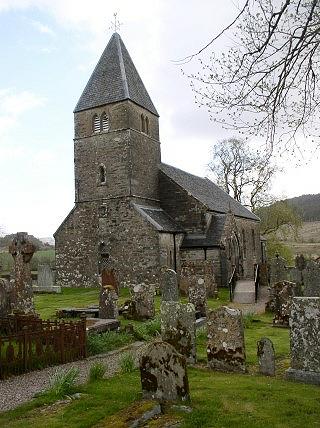 In Scotland, historically the population rarely had tombstones erected in their memory. Meanwhile, many tombstones have been worn down by the weather to the point of being unreadable. However, if a tombstone is found for an ancestor, as well as birth and death information, townships of residence, maiden names, and relationships may be given. In Scotland, historically the population rarely had tombstones erected in their memory. Meanwhile, many tombstones have been worn down by the weather to the point of being unreadable. However, if a tombstone is found for an ancestor, as well as birth and death information, townships of residence, maiden names, and relationships may be given.
Photo: Kilmichael Parish Church, Argyll, by Mark Pelletier (Click to enlarge)
With regard to Scotland burials, some of the unique records to be aware of include Kirk Session records, which may include plot maps, M.I. (monumental inscriptions) books in libraries and societies in Scotland covering local Kirkyards, and Lair (burial plot) registers. Lair registers are records of burial plot purchases.
Scotland cemeteries more often than not will have good written records. The associated church, or Kirk, may have kept burial registers, particularly Church of Scotland parishes. Regardless of actual religious affiliation of the ancestor, Church of Scotland cemeteries and burial registers should always be searched as it was the state church. In addition, town or city cemeteries may have sexton’s records of burials.
When you are unable to visit the cemetery or the office where the records are kept, you can contact the church or office directly for assistance. Sometimes they will send you transcriptions of the stones requested, and copies of the records. Or, you can contact the local genealogy society, or find someone in the area to visit the cemetery and copy records for you. Sometimes, they may even provide photographs of the tombstones. Through the USGenWeb site, or in WorldGenWeb, specifically the Ireland and United Kingdom GenWeb site, you can find information regarding local societies and researchers, and possibly even information on the local cemeteries and records office.
This is the latest in the continuing series of articles on searching for your family history, using family records, public records, and online resources nationally and internationally. Previous articles are available on the Genealogy Section of this website. See Genealogy in the menu options at the top of the web page. |
|
JENNY GEDDES—The Woman Who Saved Presbyterianism
by Jo Ramsdell
Throughout history there are incidents that may seem small and unimportant at the time they occur. An insignificant person may commit an act that only becomes significant and important in history years later. Such is the case of Jenny Geddes.
Since the early years of the 17th century, when James I came to the throne and united the Kingdoms of Scotland and England, he had wanted to unite the churches also. The Scottish church had been established on the same Episcopalian basis as its English cousin, but was far more puritan, both in doctrine and practice. The Scots objected to the many Catholic customs that were part of the English Church. They were wary of any religious practices imported from England. James backed off, but his son, Charles, decided to plough ahead with the religious unification. In 1633 King Charles I came to St Giles’ to have his Scottish coronation service, using the full Anglican rites, accompanied by William Laud, his new Archbishop of Canterbury. In the years that followed he began to consider ways of introducing Anglican-style church services in Scotland using the new Booke of Common Prayer. These developments met with widespread opposition.
The first use of the prayer book in Scotland was on Sunday 23 July 1637, at St. Giles’ Cathedral, when James Hanna, Dean of Edinburgh, began to read the Collects, parts of the prescribed service. As legend has it, a woman called Jenny Geddes was at the service sitting on a wooden stool. Some sources describe it as a “fald stool” meaning a folding stool as others claim that it was a larger, three-legged cuttie-stool. Jeers came from the crowd when Hanna started to read from the new book and Jenny picked up her stool and threw it a Hanna’s head, shouting “Deil colic the wame o’ ye. Out thou false thief. Dost thou say the mass at my lug?” (“The devil give a colic to your stomach. Out you false thief. Dare you say the mass at my ear?”) Others joined in with the stool throwing, so that the whole event was called “The Casting o’ the Stules”, and the Dean had to flee.
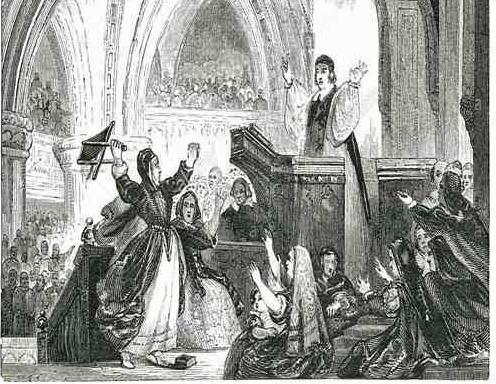
More serious rioting in the streets (and in other cities) followed. The significance of what Geddes did is that the rioting that started that day grew, and opposition to the Anglicisation of the Church of Scotland grew with it. The next year, the National Covenant was signed by many Scottish noblemen, known as the Covenanters, railing against Charles I’s power. The Bishops’ War was the next consequence, eventually devolving into the Wars of the Three Kingdoms and the English Civil War.
Jenny Geddes’ stool was, therefore, the first act of the revolutionary tumult affecting much of the 17th century. In the aftermath of the riots definitive evidence is hard to come by, and some doubt if Jenny Geddes started the fight or if she even existed, but she remains a part of Edinburgh tradition and has long had a memorial plaque in St. Giles. A sculpture which was added recently, shows a three-legged cuttie- stool rather than a folding stool.
|
|
|
A History of the Scottish Highland Games
The Scotsman, Scotland’s National Newspaper
|
They channel a style of Scottishness expressed in tartan, bagpipes and brute strength with tens of thousands drawn to Highland Games around the world each year. Such events are as likely to be held in Detroit and Sau Paulo as they are in Dundee and St Andrew’s as people search out a little connection to heritage and home.
Highland Games have proved to be one of Scotland’s biggest cultural exports with the events rooted some 1,000 years ago, at the foot of a hill in Deeside. Here we look at how they all began - and why they travelled so far.
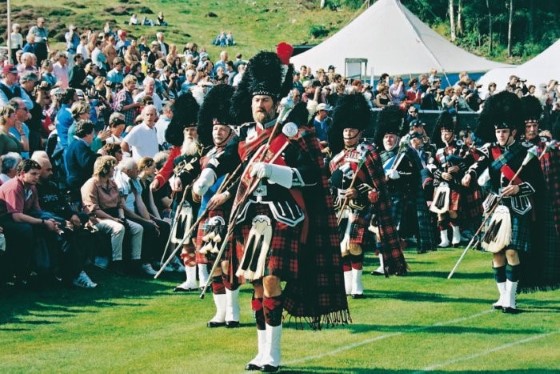
HISTORY
It is said they were originally a form of war game in which the strongest and bravest soldiers would triumph. Highland Games remain a potent expression of a form of Scottishness - both at home and abroad - with the celebration of pipes, drums, dancing and brute strength carried around the world in a fond tribute to the motherland.
The first historical reference to Highland Games-type events in Scotland was made during the reign of King Malcolm III (1057-1093) when he summoned men to race up Craig Choinnich near Braemar in order to find a royal messenger.
The games are said to have become a way of choosing the ablest men for the clan chieftain’s household but it wasn’t just brute strength that was determined. Musicians and dancers were also sought to add prestige to the clan.
The Ceres Games in Fife are considered the oldest, continuous Highland Games in Scotland and began in 1314. They continue to thrive more than 700 years after the King of Scots, Robert the Bruce, granted a charter for the village to hold a market and fair to acknowledge the farmers, labourers, craftsmen and “the small folk” who fought at the Battle of Bannockburn. The growing tradition of Highland Games was stalled following Culloden, when the 1746 Proscription Acts were passed to dismantle Highland life, culture and society. The Braemar Gathering, arguably the most famous games in the world given their royal connections, had its roots in Kings Malcolm’s race but its modern incarnation began in 1815 when a mutual assistance society of wrights - or builders - was formed in the town.
The workers were to hold a procession every year and in 1832, foot races were held for the first time - and have been run every year since. The games were attended by Queen Victoria in 1838 with royal support continuing since then. It could be said that Queen Victoria’s endorsement of the games has been the biggest single factor in the growth of such events and their export around the world.
BIGGEST EVENTS IN SCOTLAND
There are around 100 Highland Games in Scotland every year. The Cowal Highland Gathering has long claimed to be the biggest games in the world. At its peak, it drew 30,000 spectators but numbers are more likely to be in the region of 20,000 over the three-day event. The games hosts the World Highland Dancing Championships with competitors from US, Canada, Australia commonly taking part.
The Braemar Gathering attracts around 10,000 spectators a day with the Queen a loyal attendee. Similar numbers are drawn to the Lonach Highland Gathering in Strathdon, Aberdeenshire, with the highlight undoubtedly the march of the Lonach Highlanders. Around 200 men of all generations, drawn from the glen and armed with Lochaber axes and pikes, join the march from Belabeg to Lonach Hall in a 175-year tradition. Lonach grew in popularity due to the regular attendance of comedian Billy Connolly, who formerly owned nearby Candacraig House. A number of his house guests would also attend Lonach, with late comedian Robin Williams taking part in the hill race. Comedian Steve Martin and actor Sean Connery have also been spotted in the crowds. Celebrity pulling power has also been added to the Bridge of Allan Highland Games, with Judy Murray appointed Chieftain at last year’s event. Former Rangers boss Ally McCoist and actress Dianna Rigg have also taken the honour. Hollywood actor Ewan McGregor was appointed Chieftain of the Crieff Highland Games in 2001
HOW GAMES SPREAD AROUND THE WORLD
As Scots moved around the world, so did a version of the traditions and culture that bound them. There is barely a corner of the globe that does not have a Caledonian Society with the ties to home and heritage seemingly as important today as they were for the diaspora of old. Caledonian Societies were rapidly formed in the 19th and early 20th Centuries to reflect emigration of Scots with Waipu, New Zealand, believed to be the first. The Waipu Caledonian Society was formed in 1871 to help settle new Scottish arrivals, many who had left Scotland amid The Clearance and who originally settled in Nova Scotia before moving to New Zealand. Such societies were widely formed in North America to help draw together new arrivals and act as a reunion point. The first Highland Games in the US took place in 1836 when the Highland Society of New York held its first “sportive meeting”. Three years later, the Caledonian Club of San Francisco held its first Highland Games with claims that it is now the longest running in the country. That year, the first games were held in Antigonish, Nova Scotia, homes to thousands of Scots. The largest event is now said to be the Grandfather Mountain Highland Games in North Carolina, which has an attendance of 30,000.Today, you can attend a Highland Games across Europe - particularly Germany and The Netherlands - Indonesia, Japan, South Africa and Brazil. |
|
Top 10 Reasons to Attend the Scottish Games
- Discounted Advance Tickets available on CSA Shoppping Cart - without additional fees
- New this year - Four Peaks Tap Room featuring several new releases, plus live music
- Phoenix Open Highland Dance Championship, and Pre-Premier Competition plus Dance Workshop
- Woody McCloud, the world's tallest Scotsman will be back to entertain the Wee Ones and adults alike!
- Highland Athletics lessons for kids in the 'Wee Ones' area
- Prize Passports for kids when they visit certain tents and attractions
- Genealogy & History Tent staffed by our Chief Genealogist Robert Wilbanks IV, and Chief Historian James Grant
- The Wicked Tinkers, and fan favorites Traveler, plus comedian Patrick Halloran appearing Saturday and Sunday on 'the Ghillie Dhu Pub Stage'
- Seven acoustic acts in the Learners Arms – The Acoustic Music Tent including chorale, folk and bluegrass
- Saturday night Ceilidh at Rosie McCaffrey’s Pub, 906 E Camelback Rd. in Phoenix starring The Wicked Tinkers, and Celtic folk band Blackthorn
|
|
Coming Events: Valley, Arizona, and Nearby States
North American Highland Games Calendar available at Clan Campbell Society
|
|
|
|
.jpg) |
http://foodanddrink.scotsman.com/drink/toulvaddie-become-first-new-whisky-distillery/
|
| |
|
|
|
ANNOUNCEMENTS
|
.jpg) Meet Our New Board Member Meet Our New Board Member
At the recent Directors Meeting, the Board appointed Virginia (Ginni) Caldwell as Board Secretary for the balance of the current term.
Ginni and her husband Tom spend time in Michigan during the summer months and are very active with Clan Oliphant.
Join us in welcoming Ginni to the Board.
|
Volunteers Needed
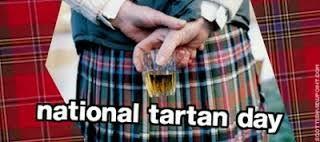
We’re forming a committee to plan a Tartan Day celebration in Phoenix on Saturday April 8th.
Current Ideas:
• Begins mid-afternoon at Heritage Square (but nothing booked yet)
• Invite all area Scots-related groups to participate
• Demonstrations by Highland Dancers, Athletes and a Pipe Band
• Nessie on display – photo opportunity
• A few speeches about the history of Tartan Day, CSA, etc
• Evening at the Rose & Crown Pub
Interested in being on the committee?
Send an email with your ideas and suggestions to:
president@arizonascots.com
|
|
Membership Renewal Reminder
Dues are still only $25 Single and $40 Family. This admits you to all our wonderful monthly events with food and entertainment provided.
It’s easy to pay by credit card at our On-Line Shopping Cart - just jump to the Membership Page
Society Gatherings
Regular membership gatherings are usually held the second
Thursday of each month at the Irish Cultural Center,
1106 N. Central Ave., Phoenix, AZ. beginning at
6:30 pm. Please check our website for further details.
|
|
Caledonian Society Officers
|
|
|
|
|
[an error occurred while processing this directive]
|